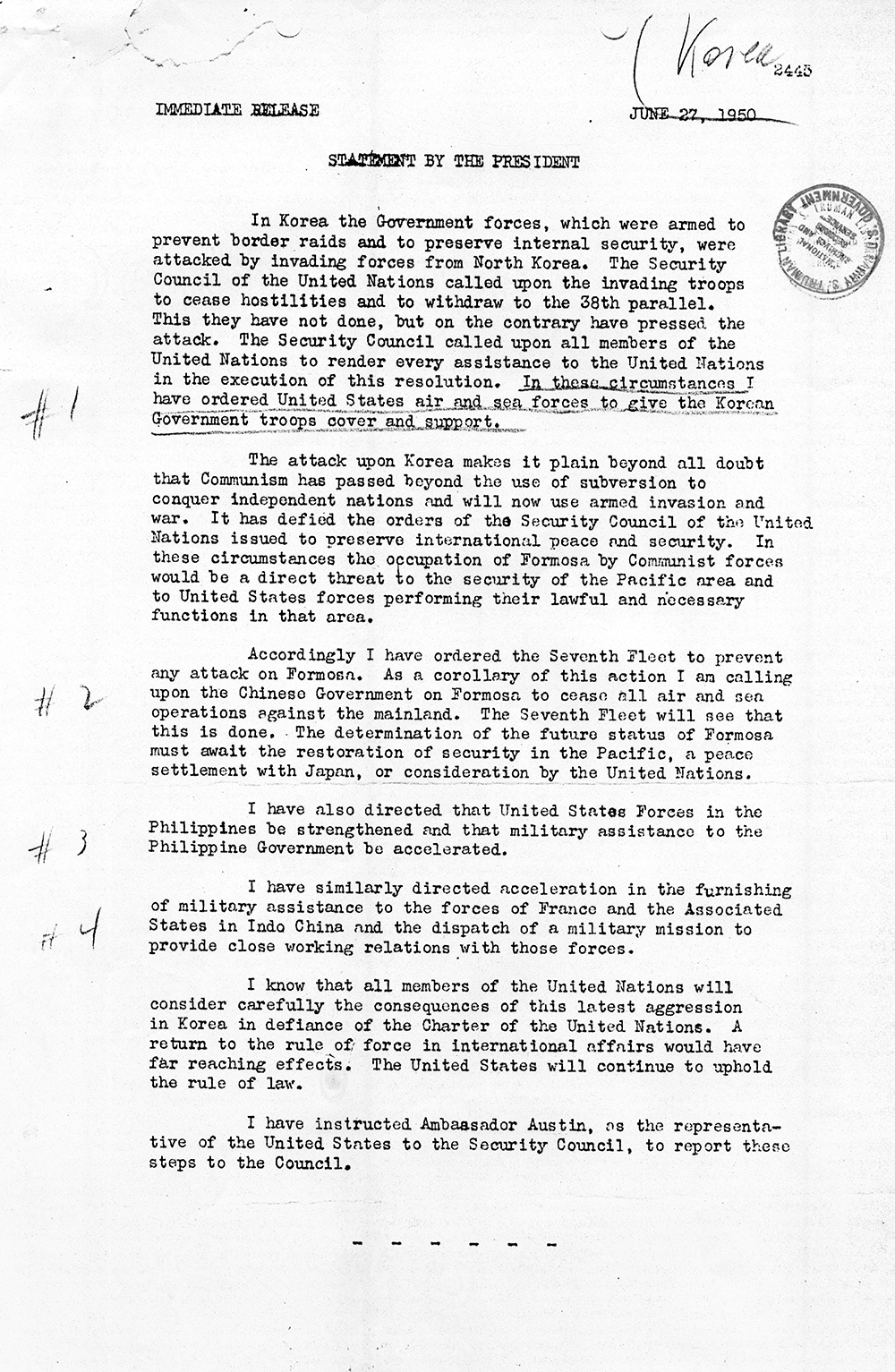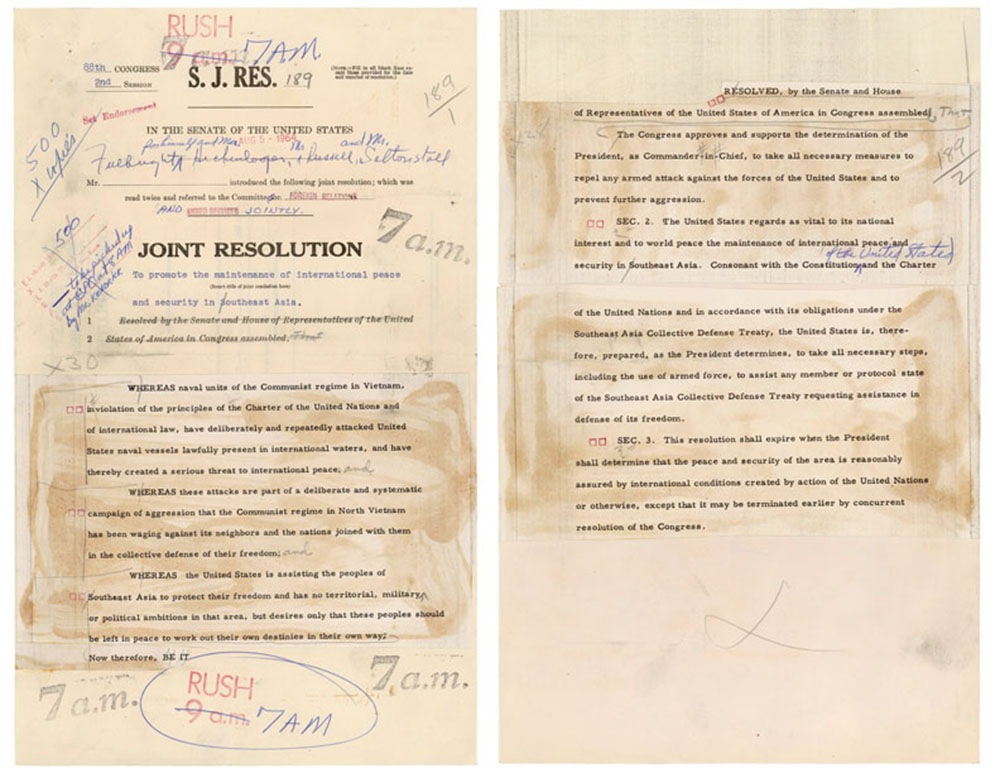The War Powers Resolution and the Twenty Second Amendment
The War Powers Resolution WPR of 1973 is generally consid. After nearly twenty-five years of experience it would be better for both branches-and for constitutional.

War Powers Resolution Of 1973 Richard Nixon Museum And Library
The War Powers Resolution.

. No administration has accepted its key provisions constitutionality and Congress has. The War Powers Resolution Public Law 93-148 was enacted by Congress over. Thus the War Powers Resolution and its purposes continue to be a potential subject of controversy.
It provides that the presidentcan s. The President is the commander in chief of American armed forces but Congress has the sole power to declare war. 93-148 11071973 LATEST SUMMARY War Power Resolution - Declares that it is the purpose of this Act to fulfill the intent of the framers of the Constitution of the United States and insure that the collective judgment of both the Congress and the President will apply to the introduction of the Armed Forces of the United States in hostilities or in.
Presidents ability to initiate or escalate military. But this Article shall not apply to any person holding the office of. No person shall be elected to the office of the President more than twice and no person who has held the office of President or acted as President for more than two years of a term to which some other person was elected President shall be elected to the office of the President more than once.
The resolution was adopted in the form of a United States congressional joint resolution. 227 a resolution directing the President pursuant to section 5 c of the War Powers Resolution to remove United States. The 1973 War Powers Resolution adopted over the veto of a weakened President Nixon after the Vietnam War has not fulfilled its supporters hope of a stronger Congressional role in decisions involving US.
Nixon vetoed the War Powers Resolution on this date. Presidents power to commit the United States to an armed conflict without the consent of the US. As required by section 4c of the War Powers Resolution.
Congress approved the Twenty-second Amendment on March 21 1947 and. Through more than twenty-two years of experience the resolution has remained a focus of controversy on the war powers of the President and Congress under the Constitution. The legislation highlighted a significant constitutional issue.
98164 title X 1013 Nov. Of experience the resolution has remained a focus of controversy on the war powers of. A vote in congress to override a presidential decision.
The War Powers Resolution also known as the War Powers Resolution of 1973 or the War Powers Act 50 USC. These authorities are vague and how they apply in practice continues to evolve and be debated. 33 is a federal law intended to check the US.
The veto of President Nixon on November 7 1973. The Twenty-second Amendment to the United States Constitution limits the number of times a person is eligible for election to the office of President of the United States to two and sets additional eligibility conditions for presidents who succeed to the unexpired terms of their predecessors. The Constitution provides war powers to both Congress and the president.
The President and Congress under the Constitution. In relation to the exercising of war powers it is estimated that five known wars have been declared under the authority of the United States Constitution. The war power resolution and the twenty-second amendment addressed which political trend in the 20th century.
This clause sets forth Congress legal right to declare war when necessary. Although the war powers resolution asserts this authority there is reason to believe that if challenged the supreme court would find the legislative veto in violation of. War Powers Clause resides within Article I Section 8 of the United States Constitution.
Joint Resolution of November 7 1973 Public Law 93-148 87 STAT 555 Concerning the War Powers of Congress and the President. The legislative veto d. Through more than twenty-two years.
The growth of presidential powers during periods of emergency which statement describes a formal requirement for becoming president as laid out in the US constitution. Congress is right to ask questions. Anned forces located outside the United States its.
Shown HerePublic Law No. To amend the War Powers Resolution to improve requirements and limitations in connection with authorizations for use of military force and narrowings and repeals of such authorizations and for other purposes. On June 7 1995 the House defeated by a vote of 217-201 an amendment to repeal the central features of the War Powers Resolution that have been deemed unconstitutional by every President since the laws enactment in 1973.
The Twenty-second Amendment b. Resolved by the Senate and House of Representatives of the United States of America in Congress assembled SECTION 1. The War Powers Act permitted the President to.
The War Powers Resolution of 1973 also known as the War Powers Act is a congressional resolution designed to limit the US. The time for debate in consideration of the veto message on such measure shall be limited to twenty hours in the Senate and in the House shall be determined in accordance with the Rules of the House. Labeling the bill unconstitutional and dangerous President Richard M.
The war powers resolution and the twenty second amendment addressed which political trend in the 20th century. The War Powers Resolution Public Law 93-148 was enacted by Congress over the veto of President Nixon on November 7 1973. Second to repel an armed attack against US.
On March 18 1998 the House defeated by a vote of 193-225 HConRes. Article I gives Congress the power to declare war and raise and support armies while Article II broadly designates the president as commander in chief. The laws text frames it as a.
Since 1973 Congress has created a vast progeny of the War Powers Resolution. The War Powers Actofficially called the War Powers Resolutionwas enacted in November 1973 over an executive veto by President Richard M. June 5 1996 96-494.
Such constraints on presidential powers over foreign policy include.

War Powers What Are They Good For Center For A New American Security En Us

Congress The President And The War Powers National Archives

Congress The President And The War Powers National Archives

War Powers Resolution Of 1973 Richard Nixon Museum And Library
No comments for "The War Powers Resolution and the Twenty Second Amendment"
Post a Comment